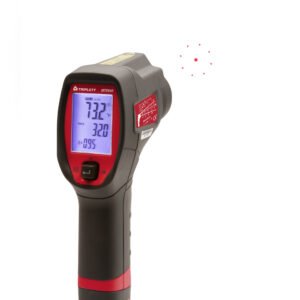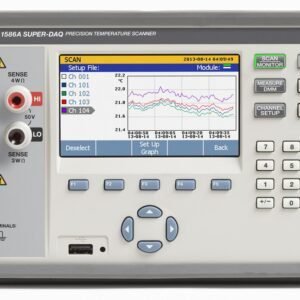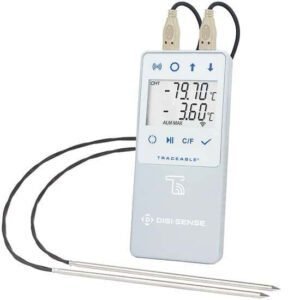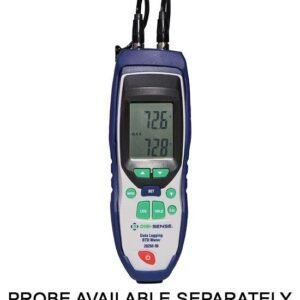No products in the cart.
Need help? Call us:
+1 (833) 763-7837
Menu
Categories
- Accessories
- Air Purification Accessories
- Antennas
- Attenuators
- Barcode Scanners
- Batteries and Chargers
- Bottles and Dispensers
- Cables - Misc
- Carrying Straps, Lanyards and Harnesses
- Carts
- Case and Cart Accessories
- Cases
- Cathodic Protection Accessories
- Coaxial
- Crimper Accessories
- Datacom Accessories
- Dry Block Bath Inserts
- EMI Accessories
- Enclosure Accessories
- FIber Optic Accessories
- Fiber Optic Cables
- Gas Detection Accessories
- General Accessories
- GPIB Adapters
- Heating Elements
- Hipot Accessories
- Hoses - Miscellaneous
- HVAC Accessories
- Induction Heater Accessories
- Input Cards
- Jacks /Adapters /Plugs /Clips /Terminators/Coaxial
- Jobsite Storage and Cabinets
- Knockout Accessories
- Lab Accessories
- LCR Test Fixtures
- LED and LCD Displays
- Manuals
- Material Handling Accessories
- Microphones
- Microscope Accessories
- Motors
- Options
- Pinhole/Holiday Detector Accessories
- Plumbing Accessories
- Precision Measuring Instrument Accessories
- Pressure Calibrator Modules
- Printers and Printing Supplies
- Probes
- Rack Mounts and Stands
- Repair Parts and Fuses
- Scale Accessories
- Shunts
- Software
- Soldering Accessories
- Spectrum Analyzer Accessories
- Static Control Accessories
- Switch and Semiconductor Modules/Access
- Test Fixtures
- Test Leads and Instrument Accessory Kits
- Thermal Imager Accessories
- Training and Education
- Underground Utility Location Accessories
- Vibration Accessories
- Video Accessories
- Voltage Transformer
- Warranty and Calibration
- Amplifiers / Preamps / Preamplifiers
- Audio Equipment
- Automotive Test Tools
- Battery Testing
- Blower Door and Duct Testing
- Borescopes / Boroscopes
- Clamp Meters
- Cleanroom
- Color and Appearance
- Conduit Benders
- Current Sensors
- Datacom and Networking Products
- Dataloggers Data Acquisition
- Decade Boxes
- Distance Meter
- Electrical Parts and Products
- Cable and Wire
- Cable Reels
- Electrical Cord
- Electrical Jumpers and Pigtails
- Electrical Parts
- Electrical Plugs and Connectors
- Line Splitters
- Lockout / Tagout
- Outlet Boxes
- Pulling Products
- Pushbutton Pendant Stations
- Receptacle Testers
- Temporary Power Distribution
- Terminal Blocks and Strips
- Terminals and Crimps
- Wall Plates
- Wire Management
- Wire Ties
- Work Lighting and String Lighting
- Enclosures and Boxes
- Environmental Testers / Physical Property
- Anemometer / Air Flow
- Barometers and Altimeters
- Chlorine Tester
- Dissolved Oxygen Meter / Fluoride
- EMF / ELF Meter
- Heat Index Monitors
- Humidity Meters
- Hygrometers
- Moisture Meters
- Nuclear Radiation Monitors
- PH / ORP Meters
- Psychrometer
- Refractometers / BRIX
- Scales / Weight
- Sound Level Meters
- Stopwatches / Timers / Clocks
- Water Quality Accessories
- Water Quality Meters
- Weather Measurement
- Wind Tunnels
- Flow Measurement
- Force / Torque / Hardness Meters
- Gas Detection
- Ground Testers
- Health and Safety
- HVAC Equipment and Instruments
- Automotive RRR Machines
- Brazing
- Combustion Analyzers
- Hose Adapters, Valves and Parts
- HVAC - Testing - Adjusting - Balancing
- HVAC Equipment - Misc
- HVAC Manifolds and Gauges
- HVAC Vacuum Pumps
- Refrigerant Leak Detectors
- Refrigerant Recovery Machines
- Refrigerant Recovery Tanks
- Smoke Pump Test Kits
- Tubing Tools
- Vacuum Gauges
- Hydraulic Cylinders
- Indoor Air Quality
- LCR Meters / Impedance Measurement Products
- Leakage Detectors
- Life Sciences Equipment
- Autoclaves and Sterilization
- Bunsen Burners
- Centrifuges
- Cold Storage
- Colony Counters
- Dry Block Heaters and Cooling Blocks
- Environmental Test Chambers
- Flame Photometers
- Flocculators
- Fluidized Bed Baths
- Gel Imaging Electrophoresis
- Glassware Washers-Dryers
- Heating Mantles / Electromantles
- Homogenizers
- Incubators
- Kjeldahl Apparatus
- Lab Apparatus - Misc
- Laboratory Ovens
- Laboratory Pumps
- Laboratory Water Purification Systems
- Magnetic Bead Based Purification
- Melting Point Apparatus
- Mixers Rotators and Stirrers
- Pipettes
- Reaction Station
- Recirculating Chillers / Coolers
- Refrigerated Heating Circulators
- Rotary Evaporators
- Shakers and Rockers
- Slide Warmers
- Spectrophotometer
- Thermal Cycler / PCR
- Titrators
- Water Baths and Liquid Baths
- Logic Analyzers
- Materials Testing
- Megohmmeter / Insulation Resistance Testers
- Micro-Ohmmeter / Milliohmmeter
- Microscopes
- Multimeters
- Network Analyzer
- Oscilloscopes
- Panel Meters
- Personal Protective Equipment
- Phase / Motor / Transformer Testing
- Power Measurement
- Power Supplies
- Process / Calibration
- Programmers / IC and RAM Testers
- Protocol Analyzers
- Prototyping
- Radiometric
- Reliability / Preventative Maint / Rotational
- RF, Microwave, EMI
- Safety Testing / Surge Testing
- Signal Generators / Counters
- Signal Level Meters - CATV / CCTV / Satellite
- Solar Analyzers
- Soldering Equipment
- BGA Rework Station
- Chemicals
- Cleaning Pins and Drills
- Depaneling Systems
- Desoldering Equipment/Rework Stations
- Desoldering Irons
- Dispensing Equipment
- Flux
- Flux Remover
- Fume Extraction
- Hot Air Guns
- Hot Air Pencils
- Lead Forming Equipment
- Nitrogen Generation
- Nozzles
- PCB Supports and Holders
- Pre-Heater
- Solder
- Solder Wick
- Soldering Equipment
- Soldering Irons
- Soldering Pots
- Soldering Robots
- Soldering Stands
- Soldering Stations
- Soldering Tip Cleaners
- Soldering Tip Thermometers
- Soldering Tweezers
- Sponges and Brass Wool
- Thermal Wire Strippers
- Tips
- Vacuum Pick-Up Tools
- Sporting / Hunting / Law Enforcement Optics
- Static Control
- Surveying / Construction Measurement
- Thermal Imagers
- Thermometers
- Thickness Gauges
- Tools
- Blackeners
- Cable Cutters
- Cable Strippers
- Cable Tie Guns
- Combination Squares
- Conduit Tools
- Crimpers
- Cutters
- Cutting Tools
- Datacom / Fiber Optic Tools
- Drill Bits and Sets
- Drill Rod
- Dry Lubricants
- Electric Screwdrivers
- Feeler Gage
- Fiber Optic Cable Tools and Fiber Scopes
- Flashlights and Headlights
- Ground Flat Stock
- Hex Drivers, Torx Drivers
- Hose Benders
- Hose Clamps
- Hot Melt
- HVAC Service Tools
- Insulated Tools
- Keystock
- Knockout Tools
- Layout Fluid
- Level Measurement
- Maintenance Kits
- Multi-Tools
- Other Hand Tools
- Pliers
- Pneumatic Hand Tool Operators
- Power Tools
- Probes & Scribes
- Punch & Die Sets
- Punchdown Tools
- Remote Hydraulic Pumps
- Screwdrivers
- Shims & Shim Stock
- Sockets & Ratchets
- Spatulas
- Telecom Service Tools
- Telescopic Tools
- Threaded Rod
- Tool Kits
- Tool Wrap
- Tweezers
- Vises
- Wire
- Wire Strippers
- Wrenches & Wrench Sets
- Toys / Cool Stuff
- Transmission Line/Station Testing
- Cable Testing
- Circuit Breaker Testers
- Corona Detection
- Dielectric Oil Testing
- High Current Detectors / Indicators
- High Voltage Detectors / Indicators
- Hot Sticks
- Phasing Sticks
- Primary Injection Test Equipment
- Safety Equipment
- Secondary Injection Test Equipment
- SF6 Gas Leak Detectors
- Transformer Testing/TTR
- Transmission Cable Height Meters
- Video Distribution Equipment
- Video Test Equipment
- Voltage / Continuity and Non-Contact Testers
- Wire Tracers / Circuit Breaker Tracers
- Workbenches
Fluke 1551A-12 1551A Ex “Stik” Thermometer Readout
Brand:
30 people are viewing this product right now
$965.80 Original price was: $965.80.$821.51Current price is: $821.51.
Shipping calculated at checkout.
Estimated delivery:5 days
THERMOMETER, FIXED RTD, -50 TO 160C, 1/4X12
- 6.35 mm x 305 mm (1/4 in x 12 in)
- –50 °C to 160 °C,
- Accuracy of ± 0.05 °C (± 0.09 °F) over full range
- Intrinsically safe (ATEX and IECEx compliant)
- User-configurable temperature trend/stability indicator
- Display temperature in °C or °F
- Optional data logging to internal memory
- Large LCD with backlight
- 300-hour battery life
- Percent battery-life and low-battery indicator
- NVLAP-accredited, NIST-traceable calibration included
SKU:
Fluke 1551A-12
EAN:
095969546263
Tags: Contact Thermometers, Thermometers
Categories: Contact Thermometers
Have any Questions?
Feel free to Get in touch
Guarantee Safe and Secure Payment Checkout
Description
Fluke 1551A-12 1551A Ex “Stik” Thermometer Readout
1551A Ex Thermometer, Fixed PRT, -80 °C to 300 °C, 6.35 mm x 305 mm (1/4 in x 12 in)
Finally, a digital substitute for your mercury-in-glass thermometers! Accurate and repeatable to ± 0.05 °C over its full range, the 1551A/1552A “Stik” Thermometer is the new “gold standard” of industrial temperature calibration. Whether working outdoors in environments where potentially explosive gases may be present or on the floor of a processing plant, the intrinsically-safe, battery-operated, portable reference thermometer is designed to go where you work.
Thermometer probe and digital readout combined into one unit
The stainless steel probe and digital readout are fixed together and calibrated as a system. The accuracy specification is easy to understand since it includes all uncertainty components, including drift, for up to one year 1. The large backlit LCD display rotates 90° making it easy to read from any angle. A user-configurable stability/trend indicator lets you know when your temperature is stable enough to record an accurate measurement. A user-settable auto-off function extends typical battery life to three hundred hours. A low-battery indicator and stop-measure function prevent erroneous measurements from being made due to low battery life. A simple three-point calibration function allows you to easily and accurately calibrate the “Stik” Thermometer. Data logging to internal memory of up to 10,000 time-stamped measurements is optionally available.
Why calibrate process temperature sensors?
Because temperature greatly effects the accuracy of a volumetric measurement, process manufacturers of chemical, pharmaceutical, food or petroleum products require accurate temperature measurements-especially for processes where quality or custody transfer are regulated by government agencies. Since all temperature sensors are subject to drift with time, regular calibration or verification against a reliable reference thermometer is required. Finding a reference thermometer that is accurate, repeatable and robust, however, can be challenging.
What’s wrong with my reference thermometer?
Industrial reference thermometers available on the market today, such as mercury-in-glass thermometers (or “ASTM thermometers”) and portable electronic thermometers are useful, but both come with inherent problems. Although accurate and repeatable, mercury thermometers are fragile. The risk of a mercury spill poses potential hazards to the environment and to the health of personnel. Many of the United States and European Union countries have already banned their use in industrial applications. Some organizations have replaced their mercury thermometers with more durable portable electronic thermometers, only to discover that the RTD probes lack the repeatability and dependability required of a legitimate reference thermometer.
The best alternative to mercury thermometers
The Fluke “Stik” Thermometer is accurate, stable and durable, making it the best alternative to mercury thermometers and existing electronic thermometers. The thin-film RTD sensor incorporates the same characteristicsof other premium reference thermometers designed by Hart Scientific, but it is more robust and less susceptible to drift. Accuracy and repeatability, however, are not sacrificed for improved durability. Using a glass-stem mercury- or spirit filled thermometer at different immersion depths, or at significantly different ambient temperatures from which it was calibrated, may require the application of emergent-stem corrections that can be tedious but necessary to calculate an accurate measurement. This isn’t required with the “Stik” Thermometer. The sensor of the 1551A Ex requires a minimum immersion depth of only 7 cm (2.8 in), with no appreciable effect on the measured temperature due to heat loss through stem conduction. Some digital thermometers can become less accurate when used outside a narrow range of ambient temperatures. This isn’t the case for the “Stik” Thermometer. Your measurement remains accurate in ambient temperatures from -10 °C to 50 °C (14 °F to 122 °F). With a superior probe design combined with electronic functions that assist accurate measurement, the “Stik” Thermometer surpasses the capabilities of other digital thermometers and is the perfect substitute for your mercury thermometers.

Easy-to-use, one-handed menu navigation
- The digital display and probe are fixed together as a system. The hinge allows the display to rotate 90° to easily view the measurement from any angle.
- Easily power up with the press of a button and after a short self-test, start making measurements within seconds. The power key is slightly recessed inside the plastic molded case to protect against accidental power off.
- Max/Min/Trend/Up key allows you to see the maximum or minimum temperature since the most recent power up. The trend function tells you the positive or negative rate of temperature change in degrees per minute.
- The Setup/Down key lets you step through submenus and adjust field values down.
- The Enter/Backlight key allows you to accept changes while in the setup menus or turn on the backlight.
- User-selectable resolution (0.1, 0.01, 0.001)
- Temperature displayed in °C or °F.
- The stability/trend indicator tells you if your temperature source is trending upward or downward (pictured trending up). A flat bar indicates that the temperature source and thermometer are stable within the user-selected stability window (0.01, 0.1, 1.0, 10.0).
Five reasons to replace mercury thermometers
- Since the “Stik” Thermometer does not contain mercury, it is not subject to government-imposed bans. Government agencies worldwide have either banned or are seeking to ban the use and transportation of industrial mercury thermometers-this seems to be a growing trend.
- The stainless steel probe sheath of the “Stik” Thermometer is far more robust than the glass stem of a mercury thermometer and better suited for industrial environments. And since the “Stik” thermometer does not contain mercury, the risk of an accidental mercury spill is eliminated.
- When considering cost of ownership, a digital thermometer is less expensive than a mercury thermometer. With a mercury thermometer, you either invest in equipment or you hire out to clean up after a mercury spill.
- Mercury thermometers cannot be adjusted after calibration. The actual temperature must be calculated by applying corrections to the measured temperature. This costs time and is susceptible to calculation error. A digital thermometer does the math for you-the displayed temperature accurately represents the actual measured temperature.
- Emergent-stem corrections may also be required if the mercury thermometer is not used under the same conditions under which it was calibrated. A digital thermometer doesn’t require that you match calibration conditions to achieve an accurate measurement. You’re only required to meet the minimum immersion requirements-which is only 7 cm (2.8 in) in the case of the 1551A Ex.
Thermometers/Contact Thermometers Template | |
|---|---|
| Temperature Range of Probe Accepted | 160 C (320 F) |
Product General Attributes | |
| Unique Features | Unique feature of the Product is the trend indication arrows. You can configure the arrows to show when the measurements are adequately stable to record a result |
| Additional Info/Comments | EMC compliance: EN61326:2006 Annex C; CISPR II Edition 5.0-2009; Class “B |
| Safety Approval | CSA |
| Interfaces I/O | Other, RS-232 |
| Storage | Compact Flash, Hard Drive, Micro SD, SD Card |
| IP Rating | IP50 |
| Product Weight | 6.9 OUNCES (0.431 LBS) |
| Product Height | 25 MM (0.984 IN) |
| Product Length | 114 MM (4.49 IN) |
| Product Width | 57 MM (2.24 IN) |
| Data Logging | Yes |
| HTS/Schedule B Number | 9025.19.8085 |
| ECCN Number | EAR99 |
| Calibration Included | NIST Calibration |
| Battery Type | AAA, Other |
| Country of Origin | China |
| Other Information | Sensor type: 100 O thin-film RTD |
Be the first to review “Fluke 1551A-12 1551A Ex “Stik” Thermometer Readout”
You must be logged in to post a review.
Manuals/Guides
BrochuresManualsSpec SheetsApplication NotesOther
| Weight | 6.9 lbs |
|---|---|
| Dimensions | 114 × 57 × 25 in |
Related products
Sale
Triplett IRTUV50 – IR Thermometer with UV Leak Detection
Sale
Oakton 18000-28 – Digi-Sense Ultra-Low Temperature Data Logger with TraceableLIVE® Wireless Capability and Calibration; 2 Probes
Sale
Oakton 20250-96 – Dual-Input Data Logging Thermometers
Our team of knowledgeable professionals is here to help you make informed decisions. Whether you need product recommendations, technical support, or guidance on your purchase, we're just a click away.
Contact Us Now:
📧 sales@nestesinstruments.com
📞 +1 (833) 763-7837
Let us assist you in finding the perfect solution!
Contact Us Now:
📧 sales@nestesinstruments.com
📞 +1 (833) 763-7837
Let us assist you in finding the perfect solution!












Reviews
There are no reviews yet.